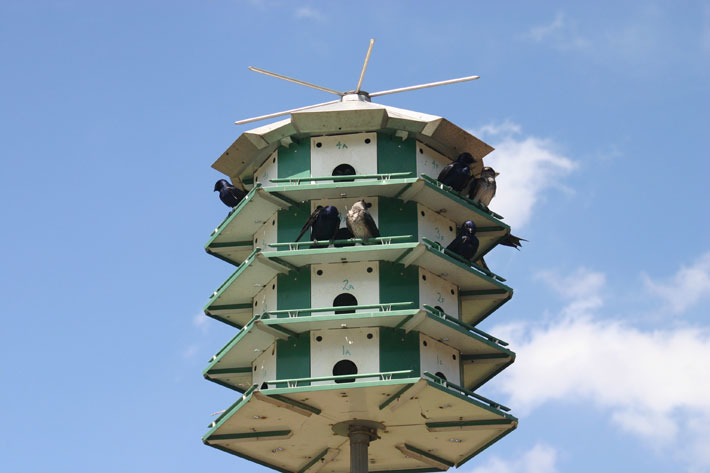Martins once nested in tree cavities, but they’ve since come to prefer the housing options humans provide. But establishing a colony requires more than just a box on a pole.
No matter what the weather holds for us this spring and summer, whether it be rainy or drought, an open area in the yard can make a perfect turn radius for cascading swallows: this could be the year to grow purple martins instead!
Martins once nested in tree cavities, but they’ve long since come to prefer the housing options humans provide. All over North America, a corps of dedicated landlords and volunteers will soon be busy preparing housing for the arrival of spring martins.
Most purple martins return after Valentine’s Day and don’t nest until much later, so don’t rush to open up your houses early. As successful martin landlords already know, establishing a colony requires more than just a box on a pole.

- Location matters. Martins prefer housing in wide-open spaces, yet adjacent to human activity.
- Regular maintenance before and during the nesting season is key. Plan on lowering the boxes every five to seven days to address issues as they occur.
- Discourage house sparrows and starlings from building their nests in your martin houses by not feeding them nearby. Proper martin houses may include baffles, starling-resistant entries, and other features, but sparrow nests must be removed by hand.
Existing colonies always need volunteers to keep records. Watch for purple martin workshops as the season gets underway for a chance to interact with real martins (and their busy landlords).


